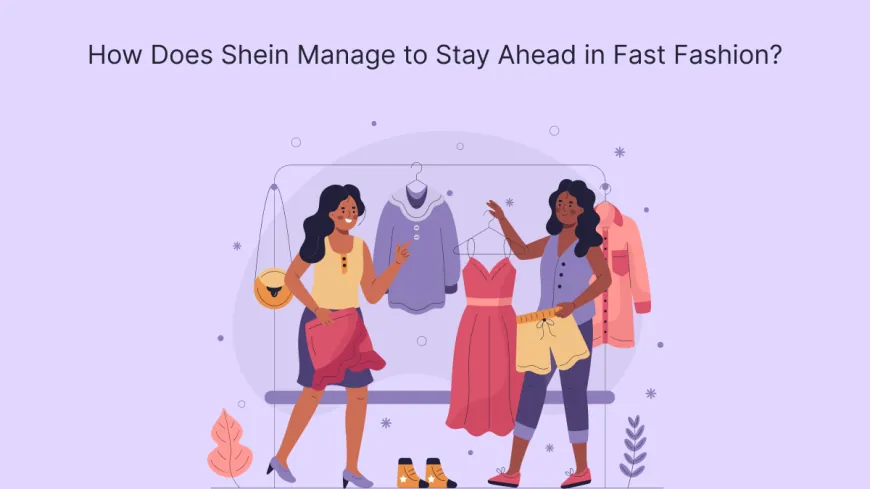How Does Shein Manage to Stay Ahead in Fast Fashion?
Shein stays ahead in fast fashion through a highly responsive supply chain, real-time trend analysis, and customer feedback integration. Its innovative use of social media and influencer marketing fosters engagement, while competitive pricing ensures accessibility, driving continuous brand loyalty among consumers.

Shein, the Chinese online fast-fashion retailer, has rapidly ascended to the forefront of the global fashion industry, surpassing established competitors and capturing the attention of millions of consumers. Known for its trendy styles and affordable pricing, Shein's ability to stay ahead in the fast-fashion landscape is a combination of innovative strategies, technological integration, and consumer engagement. This article delves into the key factors that enable Shein business model to maintain its competitive edge in the fast fashion market.
Data-Driven Decision Making
At the core of Shein’s success is its data-driven approach. The company leverages vast amounts of consumer data to inform its business decisions. By analyzing customer behavior, preferences, and trends in real time, Shein can make swift adjustments to its product offerings, marketing strategies, and inventory management.
Shein actively monitors social media platforms like Instagram and TikTok to identify emerging fashion trends. By utilizing data analytics, the brand can determine which styles are gaining traction and produce and release trending items quickly. The company collects data on customer preferences and buying habits, allowing it to tailor its product offerings to meet consumer demands, thereby enhancing customer satisfaction and loyalty. Moreover, Shein employs historical sales data and predictive analytics to anticipate future demand, optimizing inventory levels and reducing overproduction and waste.
The benefits of this data utilization are manifold. The agility derived from relying on data enables rapid decision-making and responsiveness to changing market dynamics. Additionally, by understanding customer preferences, Shein can provide tailored recommendations and enhance the overall shopping experience.
Agile Supply Chain
Shein’s agile supply chain is a crucial component of its business model, allowing it to respond quickly to consumer demands. The company has perfected a system that minimizes lead times and maximizes flexibility in production.
Unlike traditional retailers that produce large quantities of clothing in advance, Shein employs a just-in-time manufacturing approach. This strategy means the company produces smaller batches of designs based on real-time demand, allowing it to quickly ramp up production for items that sell well while discontinuing those that do not. By working closely with a network of factories in China, Shein enables faster production cycles, reducing shipping times and costs for rapid turnaround on new designs. This rapid design-to-production cycle allows Shein to take a design from concept to market in as little as two weeks, which is unmatched in the fashion industry.
The benefits of this agile supply chain are significant. The speed to market that Shein achieves keeps customers engaged and encourages them to return for the latest styles. Additionally, by producing in smaller quantities, Shein minimizes the risk of excess inventory, a common issue in the fashion industry.
Innovative Marketing Strategies
Shein's marketing approach is integral to its success. The company has mastered the art of leveraging social media and influencer partnerships to create a buzz around its brand.
The brand collaborates with fashion influencers on platforms like Instagram and TikTok to showcase its products, helping it reach a wider audience, particularly among younger consumers. Furthermore, Shein encourages its customers to share their purchases on social media using designated hashtags. This strategy creates a sense of community around the brand and serves as organic advertising, amplifying brand visibility. Shein often runs promotional campaigns that encourage users to participate in fashion challenges, further engaging its audience and generating user content.
These innovative marketing strategies have contributed to increased brand awareness. Shein’s marketing tactics have helped the brand go viral, especially among Gen Z and millennials. By engaging directly with consumers through social media and influencer collaborations, Shein fosters a loyal customer base that is more likely to make repeat purchases.
Affordable Pricing and Diverse Offerings
Shein is known for its low prices, making fashion accessible to a broad audience. The company achieves this through efficient production processes and cost-effective manufacturing.
Shein benefits from producing high volumes of clothing at lower costs, allowing it to pass savings on to consumers. This pricing strategy attracts budget-conscious shoppers looking for trendy apparel. Additionally, Shein offers an extensive array of products, from clothing to accessories, catering to various styles and demographics. This diverse catalog ensures there’s something for everyone, broadening its customer base.
The competitive pricing strategy enables Shein to capture market share, especially among younger consumers who are often more price-sensitive. The combination of low prices and a constant stream of new styles encourages consumers to shop more frequently, driving higher sales volumes.
Conclusion
Shein’s remarkable ability to stay ahead in the fast-fashion industry can be attributed to its innovative business model, which combines data-driven decision-making, an agile supply chain, effective marketing strategies, affordable pricing, and emerging sustainability efforts. By understanding and adapting to consumer trends quickly, Shein has established itself as a leader in fast fashion, demonstrating that success in this competitive landscape requires agility, creativity, and a keen understanding of the market. For businesses looking to thrive in a rapidly evolving environment, Shein business serves as a compelling case study in adaptability and consumer engagement.

 smithjoe
smithjoe 










